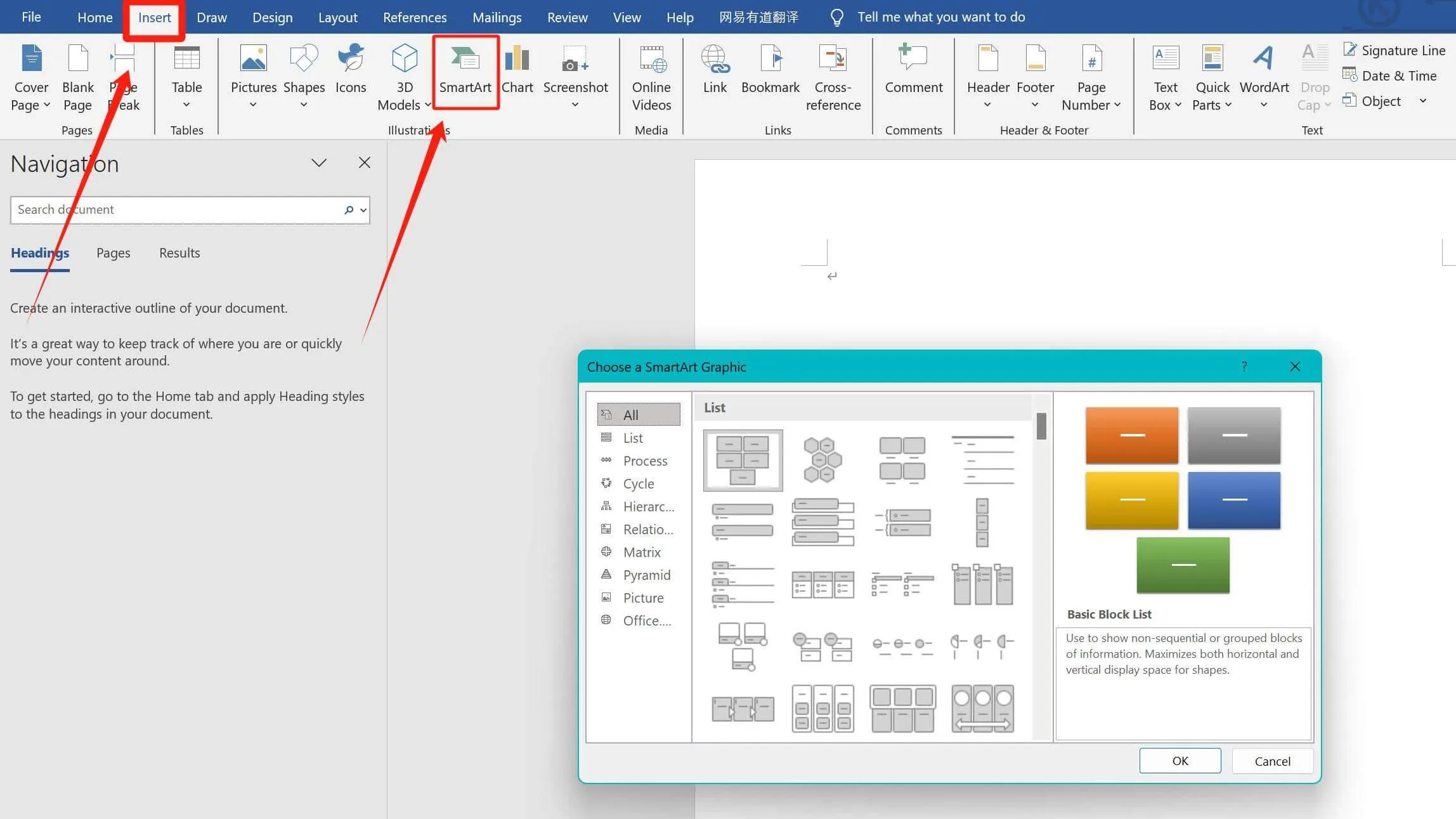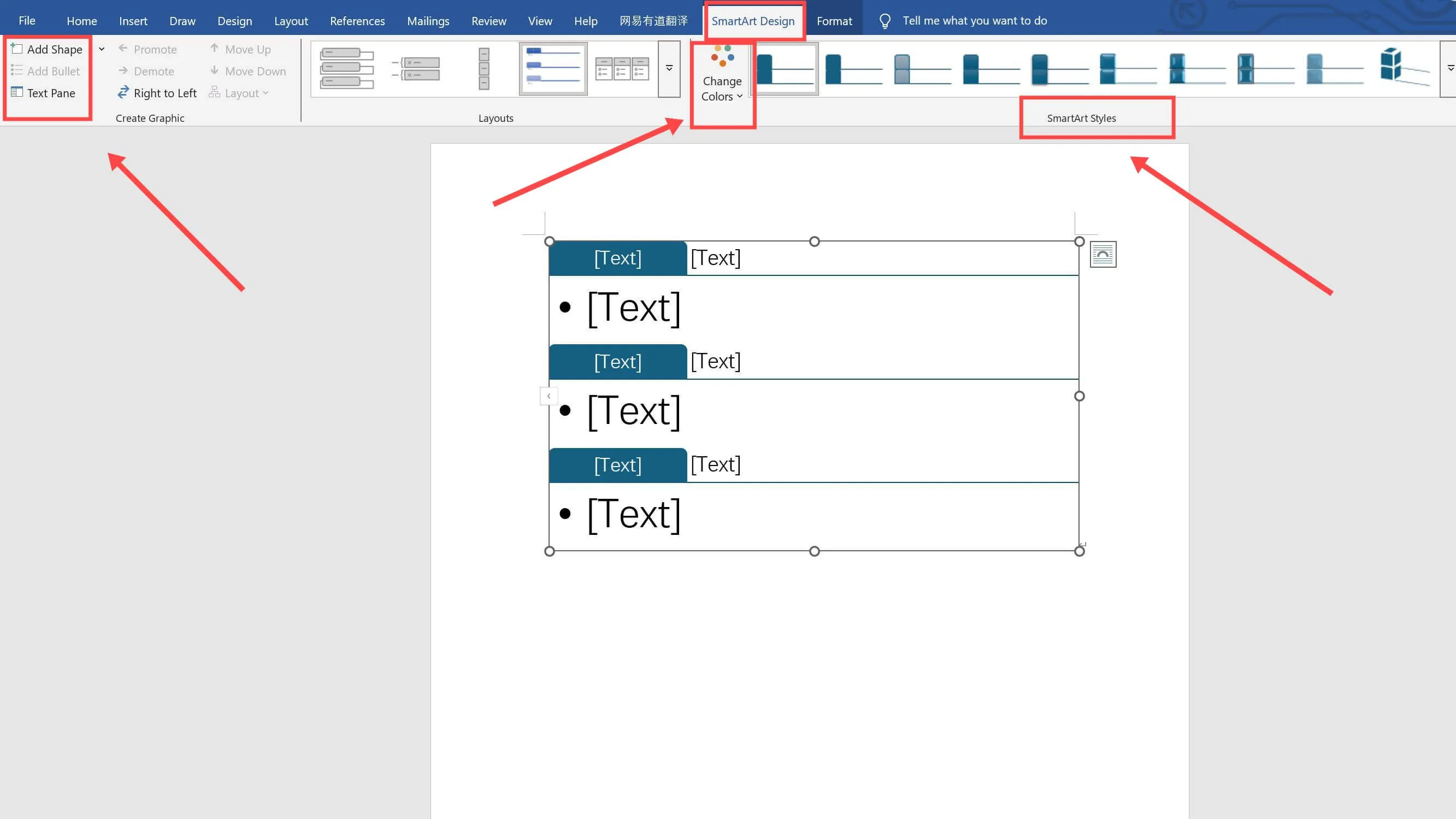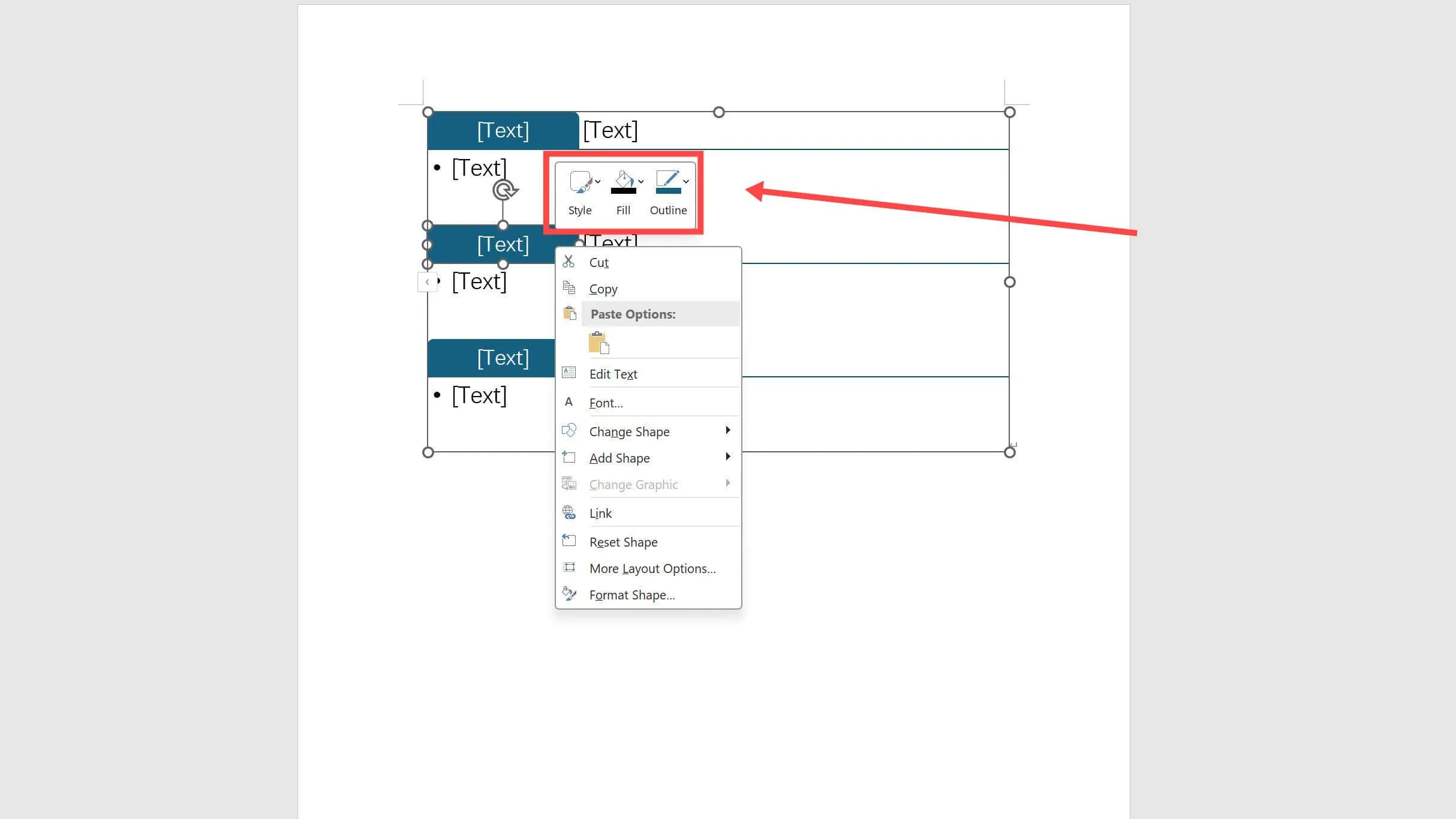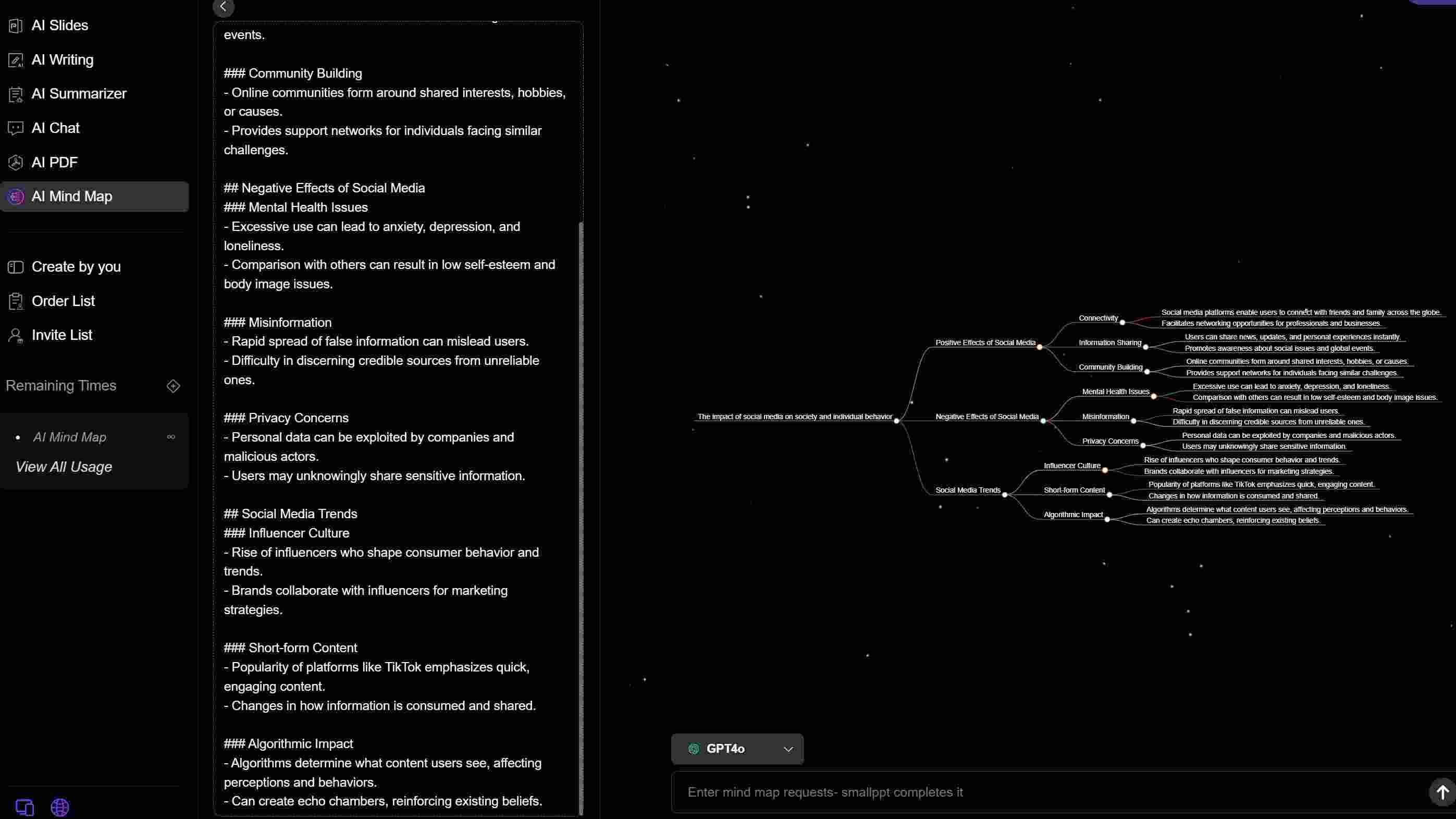
Mind maps help organize ideas clearly and integrate information efficiently. Sometimes, inserting a mind map into Word can make processes or complex data easier to understand. This article will show you how to create a mind map in Word.
Steps to Create a Mind Map in Word
» Open Word and select the file to add a mind map.
» Click Insert in the top navigation bar, find a suitable mind map style under SmartArt, and insert it.

» Select the inserted mind map, click SmartArt Design above, and further adjust the mind map's details there.
» In the leftmost panel, some mind map layouts allow clicking Add Shape to add entries, while others do not. Use Change Colors to modify the color of shapes in the mind map.

» Alternatively, right-click a specific shape you want to recolor, then customize its style, fill color, and outline color individually.

Advantages of Mind Maps
1. Visual Presentation
It displays complex information and ideas graphically, using lines, shapes, and colors to connect concepts, which makes relationships between ideas clear at a glance and helps people grasp the big picture quickly.
2. Promotes Thinking
Mind maps can help us organize and sort out our thoughts systematically, starting from the central theme and gradually expanding the branches to guide people to think divergently.
At the same time, it can also clearly present the logical relationship between each part, which helps to improve logical thinking ability and make thinking more organized.
3. Boosts Learning and Productivity
In the learning process, it can be used to summarize knowledge points, preview and review course content, etc., to help students better understand and master knowledge.
At work, it can be used in scenes such as meeting minutes, project planning, brainstorming, etc., to quickly record key information, clarify tasks and ideas, and improve work efficiency and quality.
4. Easy Communication
Mind maps present information in a concise and clear way, which makes it easy to communicate and share with others. Whether in team collaboration or reporting to others, it allows others to quickly understand the core content and key points.
Some common types of Mind Maps
♦ Hierarchical Tree Diagram
A root node representing a central theme expands downward into subtopics, which can further branch into finer levels, forming a tree-like hierarchical structure. It features clear logical relationships and distinct layers.
♦ Flowchart
A visual tool composed of nodes (steps/decision points) and arrows (flow direction). It uses standardized symbols to illustrate process steps, logical relationships, and causal connections. Suitable for process optimization, problem diagnosis, or operational guide design.
♦ Circular Mind Map
The central theme is placed at the center of a circle, with surrounding branches arranged in circular or ring-like patterns. Interconnected branches form a complete circular structure, evoking a sense of wholeness and cyclical continuity.
♦ Fishbone Diagram
A fishbone-shaped structure visualizes root causes of problems: the "head" represents the core issue, while "bones" denote potential causes across different dimensions. It facilitates systematic analysis through categorized attribution.
♦ Matrix Diagram
A two-dimensional table formed by intersecting rows and columns. It systematically compares or correlates multidimensional information, revealing data relationships through coordinate positioning. Helps decision-makers identify critical issues, allocate resources, or formulate action strategies.
Where Mind Maps Can Be Useful
■ Learning
·Course Summaries: After finishing a chapter or course, you can use a mind map to systematically organize knowledge and build a complete framework. In this way, you can deepen understanding and improve retention of the material.
·Before drafting an article, use a mind map to clarify your thoughts, pin down the main theme, structure, and relationships between key points. This keeps your writing flow smooth.
·Exam Prep/Review: Turning exam content into a mind map visually connects different knowledge points. It helps you quickly locate and recall details, making study sessions more efficient.
■ Work
·Project Planning: At a project’s kickoff, creating a mind map to outline things like goals, task breakdowns, and responsibilities will give your team a clear big-picture view.
·Brainstorming: During idea-generating sessions, you can use mind maps to collect and categorize team members’ suggestions. It sparks creativity and ensures no idea gets lost.
·Progress Reports: Present results or updates via mind maps to highlight key achievements. Perfect for making complex info digestible for bosses or colleagues!
■ Daily Life
·Travel Planning: When planning a trip, you can use a mind map to arrange your itinerary, like your destination, attractions, transportation, accommodation, and food, which can also help make a reasonable itinerary plan based on your time and personal preferences. This helps you better control your travel itinerary.
·Household Management: If you have many things to deal with every day and are easily confused or forgetful, you can use mind maps to sort out the processes, items needed, and personnel division of each matter to ensure that things go smoothly. This can reduce mental load and keep everything on track!
·Fitness Goals: Start with your main goal (e.g., “build strength”), branch into cardio, strength training, etc., then schedule weekly routines. Add diet plans or recovery tips—visualizing your fitness journey keeps you motivated!
AI Tool for Creating Mind Maps
Smallppt is a tool that can generate mind maps based on your ideas.
✔️ Simply enter your idea in the provided box and click "Generate"—within seconds, it expands the mind map around your key message.
✔️ In the left text box, you can manually edit the generated content.
✔️ After generation, you can export and save the mind map as an image.
✔️ It’s ideal for brainstorming, providing fresh ideas and directions for exploration.
Example:
If you input "social media influence" as the topic, the tool will:
1. Create a central theme (The impact of social media on society and individual behavior).
2. Branch into subtopics like:
• Positive Effects (Connectivity, Information Sharing, Community Building).
• Negative Effects (Mental Health Issues, Misinformation, Privacy Concerns).
• Social Media Trends ( Influencer Culture, Short-form Content, Algorithmic Impact).
Smallppt also has an AI Summarizer, which can help you refine text content. If you need to make a long document into a mind map, it can help you well and reduce your workload.

You already know how to create a mind map in Word, and you can use smallppt to help you fill in the text content.


